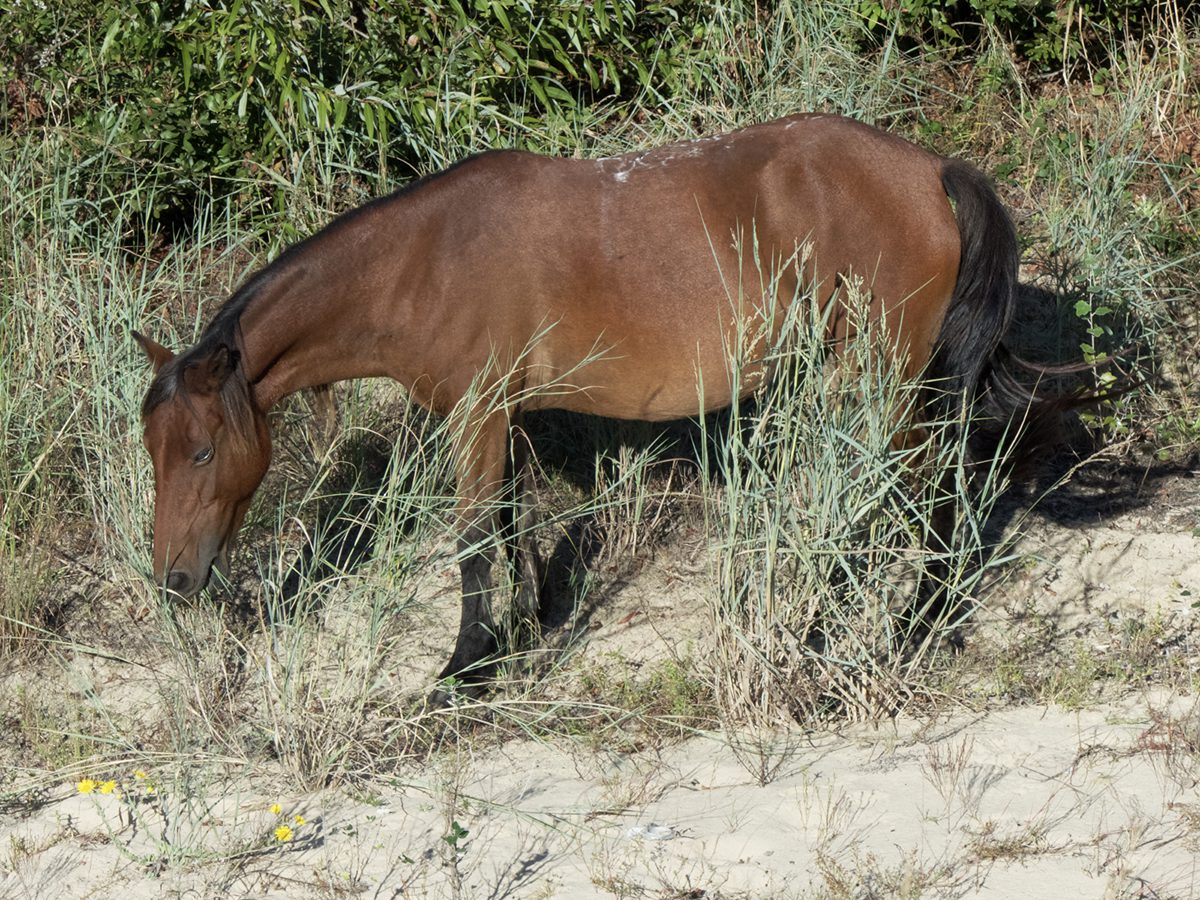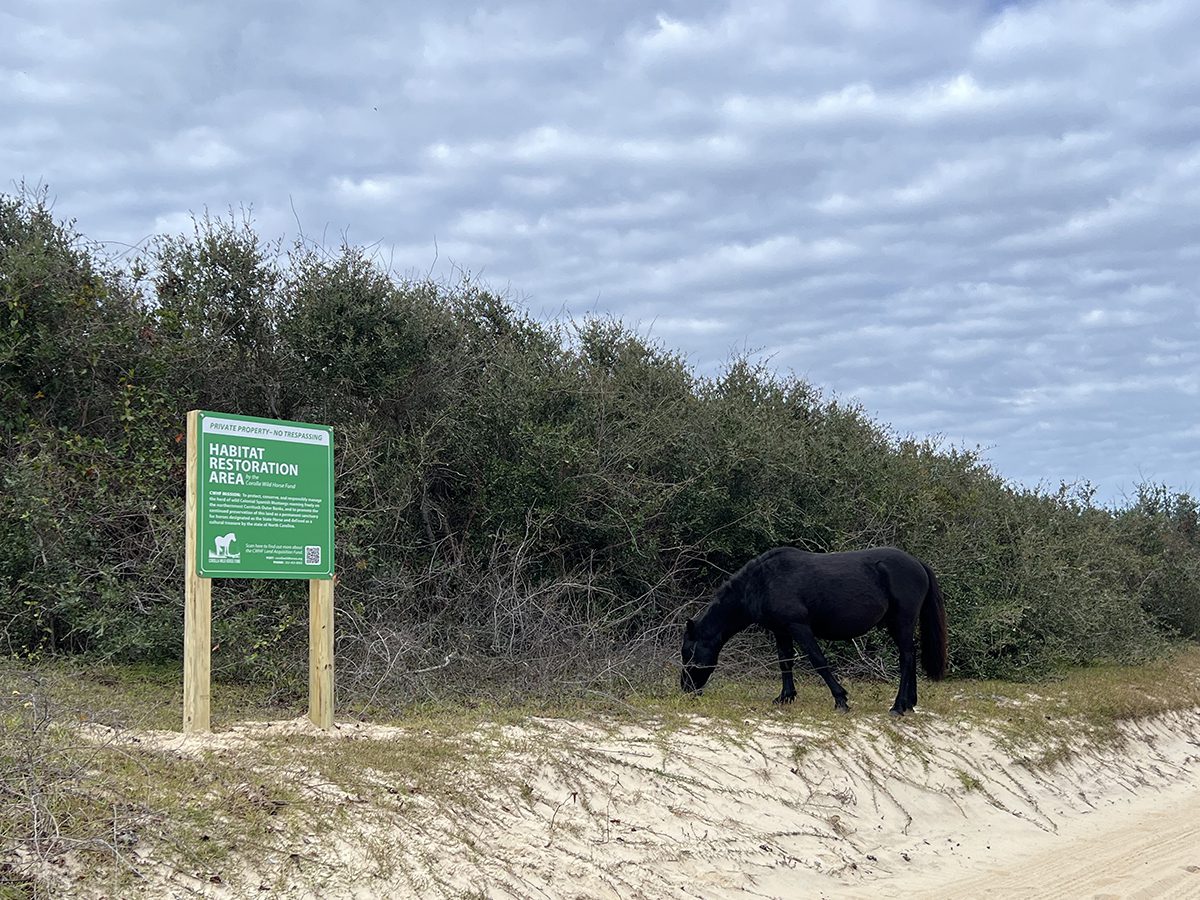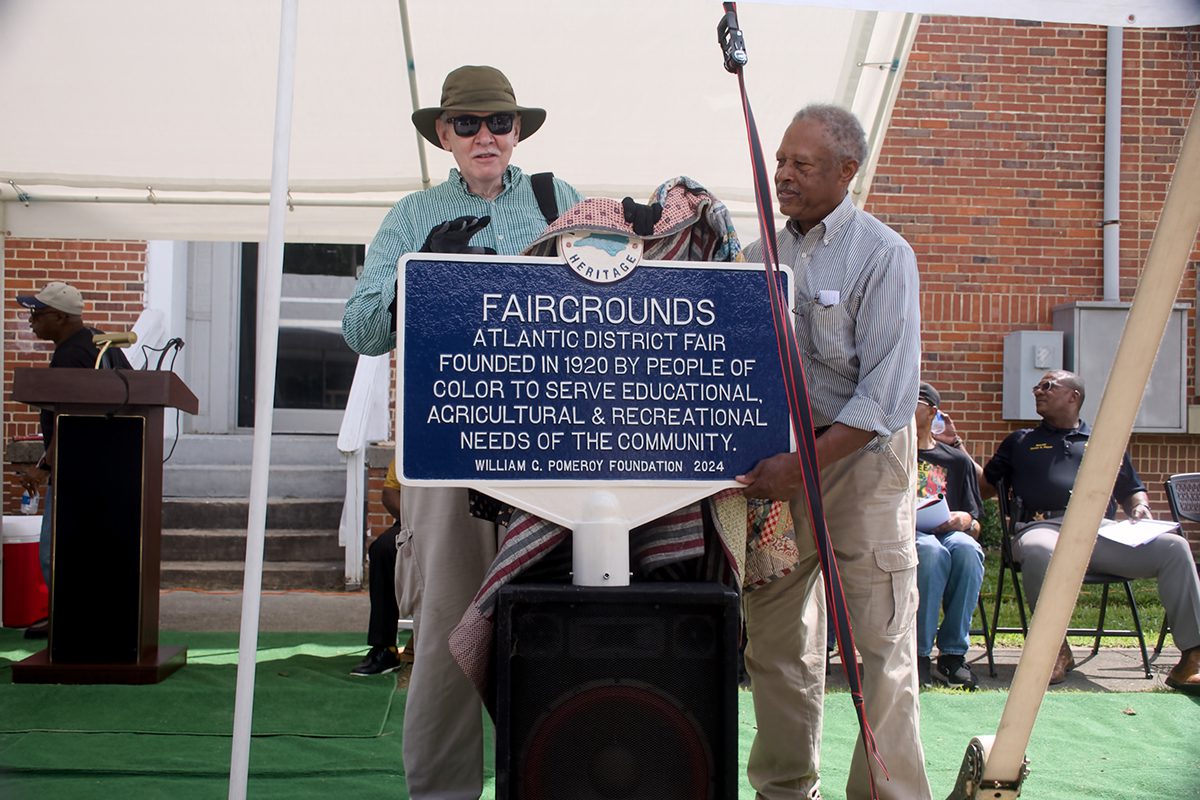
Time may be running out for the wild horses of Corolla.
The herd lives in an area accessible by four-wheel-drive vehicles only.
Supporter Spotlight
Wandering among the 11 miles of dunes, maritime forest, beach and sand roads between the end of the paved road and the Virginia state line, the horses were relocated from Corolla to the northern end of the Outer Banks in 2001.
In 2003, a sea-to-sound fence was completed, keeping the herd from wandering into the development and traffic of Corolla.
But development is coming even to the four-wheel-drive area, Carova, of the Currituck Banks. There are no paved roads north of Corolla, no stores and no services, yet homes are being built, almost all of them for the vacation rental market.
Some of the homes are designed specifically to handle large events with 16 to 24 bedrooms. Most are not that large, but the building has continued for some time and inexorably the open land that the horses need for their well-being is being transformed.
There are, at last count, 101 horses in the Corolla wild horse herd, according to Corolla Wild Horse Fund Chief Operating Officer Jo Langone. That’s down from 110 the previous year. There were some deaths and a few of the horses were removed from the herd and relocated to a farm that has been set aside for them because of health issues.
Supporter Spotlight
The Wild Horses of Corolla, or “Bankers,” as they are sometimes called, are feral animals. Introduced to North America by the Spanish conquistadores in the 16th century, they have adapted remarkably well to the Outer Banks environment, so well that they are recognized as a landrace breed.
“The Bankers are recognized as a landrace breed — one that has genetically adapted to and is able to survive its unique habitat, has distinctive and identifiable traits, has not been purposefully improved by the introduction of domestic, standardized stock, and has a historical origin in a specific region,” the Corolla Wild Horse Fund notes on its website.
Although there are other genetic markers in their makeup, there is reason to believe that the Corolla herd, isolated for decades, is directly descended from their Iberian ancestors.
In 2013, the Corolla Wild Horses Protection Act passed the U.S. House but was not taken up by the Senate. The introduction to the bill noted, “There is evidence that Corolla horses were introduced to the Currituck Outer Banks by Spanish explorers 500 years ago.”
There are 7,544 acres between the north end of Corolla and the Virginia line. Some of that is the state- and federally protected property of the 965-acre Currituck Banks Estuarine Reserve, although over half of the acreage is in the wetlands of Currituck Sound.
There is also the 3,674-acre Currituck Wildlife Refuge. Most of the refuge is marsh and wetlands, but there is a mile and a half of protected land separating the subdivisions of Swan Beach and North Swan Beach.
Yet nearly all of Carova is available for development.

The Corolla Wild Horse Fund wants its Land Preservation Initiative that was announced Nov. 16 to set aside some portion of the undeveloped land. The initiative is to be supported by a land-acquisition fund that, “allows supporters to donate towards the purchase, conversion to habitat, and habitat maintenance of property that will be held in conservation into perpetuity.”
“The fund itself has purchased seven lots,” Langone said. An additional two lots also have been donated to the Corolla Wild Horse Fund.
There is added urgency, Langone noted, to set aside protected land for the herd. Development has been ongoing for some time in the Carova area, but recent events seem to have accelerated that development.
“It (construction) is nothing like in the last couple of seasons,” she said. “Having COVID was a double edge. It turned so many people on to this area for the first time, it was quite remarkable. And when people see it, it knocks you out, and well, ‘I want to be there,’ and a lot of people have decided they’re going to be here.’”
The lots in the Corolla Wild Horse Fund initiative are small, about a third of an acre in size, and as much as can possibly be done, the Corolla Wild Horse Fund is hoping the lots will be contiguous. The lots are in areas that have not yet been developed, and for Herd Manager Meg Puckett, owning the property is the first step.
“You acquire the land, but then we need to make sure that it’s viable habitat. Maybe there’s things that we can do to that land to make it a better environment for the horses and other wildlife,” she said. “There’s a lot more that goes into it than just buying the land, but the land acquisition is certainly step one.”
At one time, Bankers roamed freely from Carova to the Shackleford Banks. Exact numbers are hard to find. In 1926 National Geographic writer Melville Chater estimated the total number of Bankers to be between 5,000 and 6,000.
The horses thrived until the 1930s when the federal government created Pea Island National Wildlife Refuge. The belief, at that time, was that the horses, because they were nonnative, were damaging the ecosystem that migratory waterfowl needed. The decision was made to eliminate the herd and a bounty was placed on the horses. At a time when the Great Depression gripped the Outer Banks, as well as the nation, families saw the bounty as economic survival. Today, the last remnants of the 5,000 to 6,000 horses that Chater claimed live on as the Corolla wild horses and at the Shackleford Banks father south along the North Carolina coast.
It is unclear, though, if the Corolla horses are destructive to the environment. Puckett said that what she sees in her work as herd manager does not match that belief.
“I think it doesn’t take someone who’s an expert in this to take a step back and say this population of horses has not only lived here, they’ve thrived,” she said. “If they were as destructive to the environment as some people say that they are, they wouldn’t still be alive. They wouldn’t be able to survive if they destroyed their environment. They also would be very damaging to other wildlife, and we just don’t see that.”
The view that the Corolla herd is not as destructive as once thought has been gaining acceptance. Because part of the area they use is state and federal lands, the Corolla Wild Horse Fund management plan is created in conjunction with government agencies. When first presented, the U.S. Fish and Wildlife Service had sought a herd totaling 60, a number too low to maintain a healthy population. That number, though, has been revised as evidence of what the real impact of the herd has been.
“For U.S. Fish and Wildlife and for the state of North Carolina to come to the table and say, ‘We agree to your population statement of no less than 110, no more than 130,’ I think speaks for itself, as far do the horses have a negative impact on the environment,” Puckett said.







